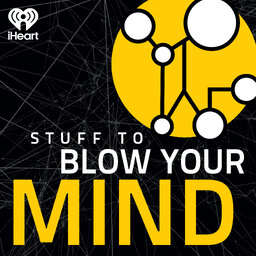The Cauldron, Part 3
On a mundane level, a cauldron is nothing more than a great cooking pot, but it takes on supernatural dimensions in various myths and legends. In this episode of Stuff to Blow Your Mind, Robert and Joe discuss the history of cauldrons and their links to tales of witchcraft, rebirth and the mandate of heaven.
 Stuff To Blow Your Mind
Stuff To Blow Your Mind


